This post may contain affiliate links, where we may receive a small commission if you purchase something through following the links at no extra cost to you.
Inside high walls there is a labyrinth of streets full of life. Wander around taking in the local life and food scene. Visit a magificent palace with some of the most handsome doors ever seen. It’s colorful, hectic and a mix of old and new. With a majestic past and eyes towards the future, the gateway to Rajasthan is certainly a must-see. Welcome to Jaipur!
Rajasthan’s capital Jaipur, with a population of over 3 millions, got the name from its founder Jai Singh, a great warrior who came to power at the age of 11. Jaipur is one of the first planned cities in India. After its foundation in 1727 the city was laid out with major roads, offices and palaces.
Jaipur is the gateway for further travels in the state. Most people spend some time here en route to other places in Rajasthan. Together with Delhi and Agra, Jaipur forms the Golden Triangle, a popular tourist route. Your intinerary will decide how much time you can spend here, but we recommend at least two nights as there is so much to see in and around the city. This post will show you our favorite sights and places, all possible to experience in 48 hours.
Content
The Old City of Jaipur
The Old City, often reffered to as the Pink City, is where most of the magic happens. The city was originally not pink. It was painted in 1876 to welcome the Prince of Wales, later King Edward VII. Pink was traditionally seen as the color for hospitality. As the beating heart of Jaipur, you could spend days here exploring and taking in the local life. Expect it to be crowded and busy, noisy and chaotic. The traffic is heavy with camels, cycle-rickshaws, motorbikes and tuk-tuks. There are people everywhere!
But look behind the chaos. That’s where you find the marvels of Jaipur. First of all, due to good city planning, it is easy to navigate the crowded steets. Inside the walls of the Pink City you find endless small shops, especially in the main bazaar areas Johari Bazaar, Tripola Bazaar and Candpol Bazar. There are numerous of options for trying local street food, and you will also find several restaurants for a more proper meal if you prefer.
The best way to explore the Pink City is by foot, and you enter via one of the seven main gates. Some of these gates are so grand, impressive and a sight itself. The major gates are Chandpol, Ajmer and Sanganeri gates. Don’t spend all you time focusing on seeing as many sights as possible. As always in India, the local life is one of the biggest attractions, and Jaipur is no exeption. Even it is hectic, it is also colorful, full of smells, smiles and happy faces.
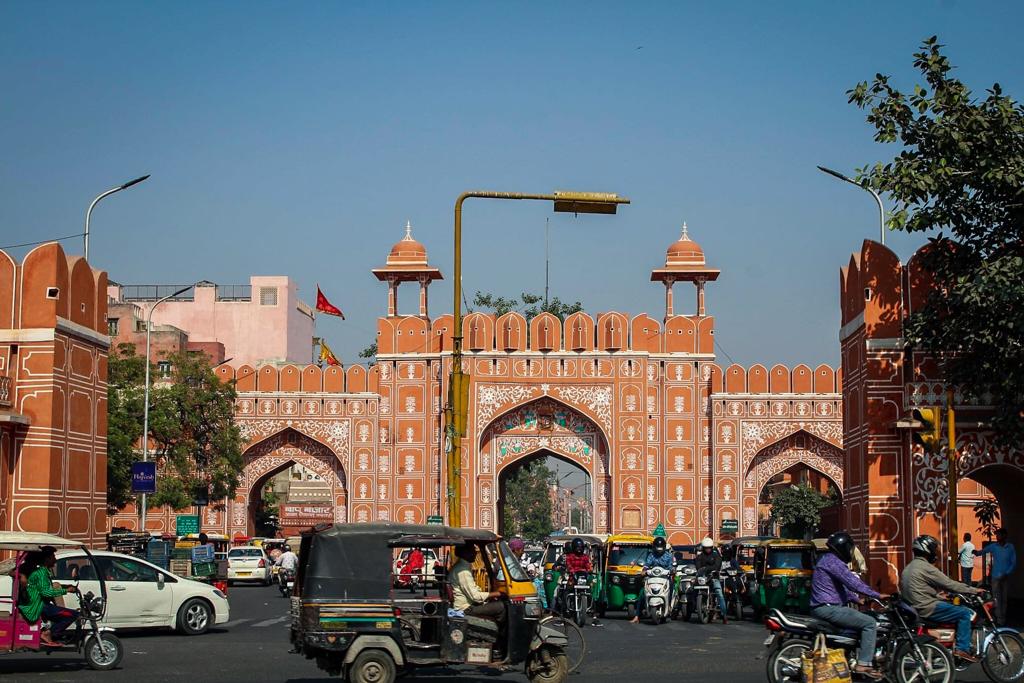
City Palace
One of the main sights in the Old City, and in Jaipur, is the City Palace. As many Indian palaces, it is not a single palace, but a complex of several buildings, courtyards and gardens. It is located right in the centre of the Old City. Historically the palace was the ceremonial and administrative seat for the Maharaja of Jaipur. The palace is still the home of the Jaipur royal family. Today it also houses the Maharaja Sawai Man Singh II Museum, showing different collections. Furthermore, it is possible for a guided tour in selected areas of the private palace Chandra Mahal, the residence of the royal family.
Don’t miss the four amazing gates close to the inner courtyard of the palace. Representing the seasons, these gates are all beautifully decorated. The Peacock Gate, representing autumn, is stunning!
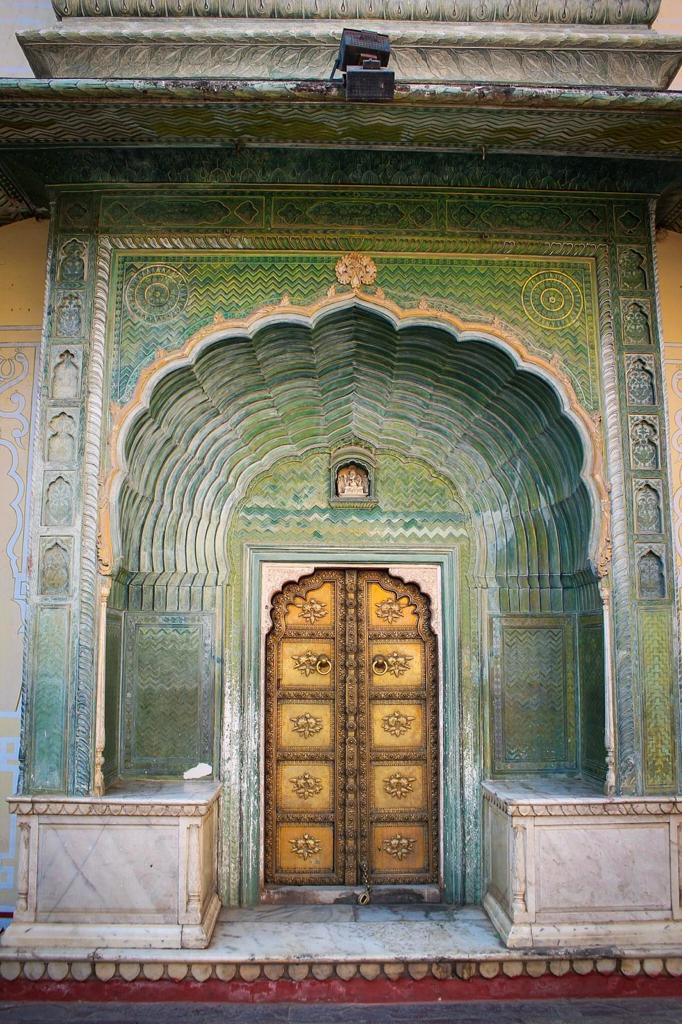

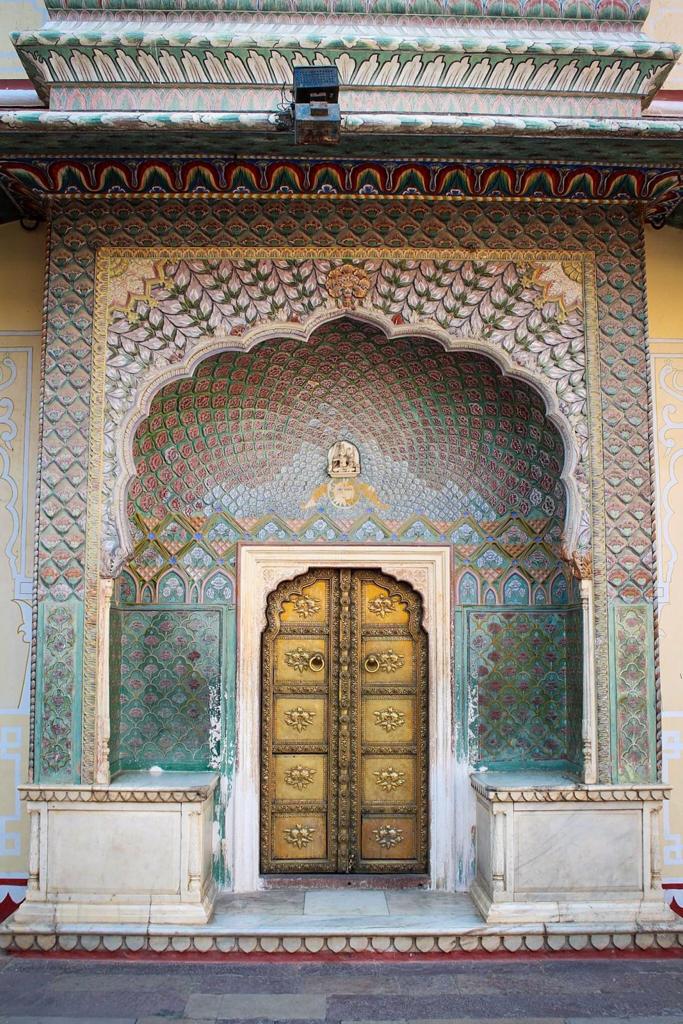
Hawa Mahal
Another palace in the Old City, and one of the most popular sights in Jaipur, is the Hawa Mahal (The Palace of Winds). This most spectacular building is just a stunning piece of architecture. With its extraordinary pink-painted facade this is one of the landmarks in Jaipur.
Hawa Mahal was contructed in 1799 by Maharaja Sawai Patab Singh, the grandson of Jaipur’s founder. This palace is the women’s chambers. The facade contains of 953 small windows. This allowed the ladies of the royal household to watch the life on the streets and city below, without being seen. Furthermore, this architecture is good on warm days, as it is conctructed in a way that allows the air to cool down as it passes through the builing.
Visit some of the cafes or restaurants opposite the street for the best views to the Hawa Mahal. The color on the facede changes during the day due to the sun, and in the afternoon just before sunset the facade is glowing warm and red.
Be aware of scams in this area. People might invite you to their home or their business “for free” to get the best views. As always in India: Nothing comes for free! You will be asked for a commission before you leave. If you choose this option, agree on the price beforehand.
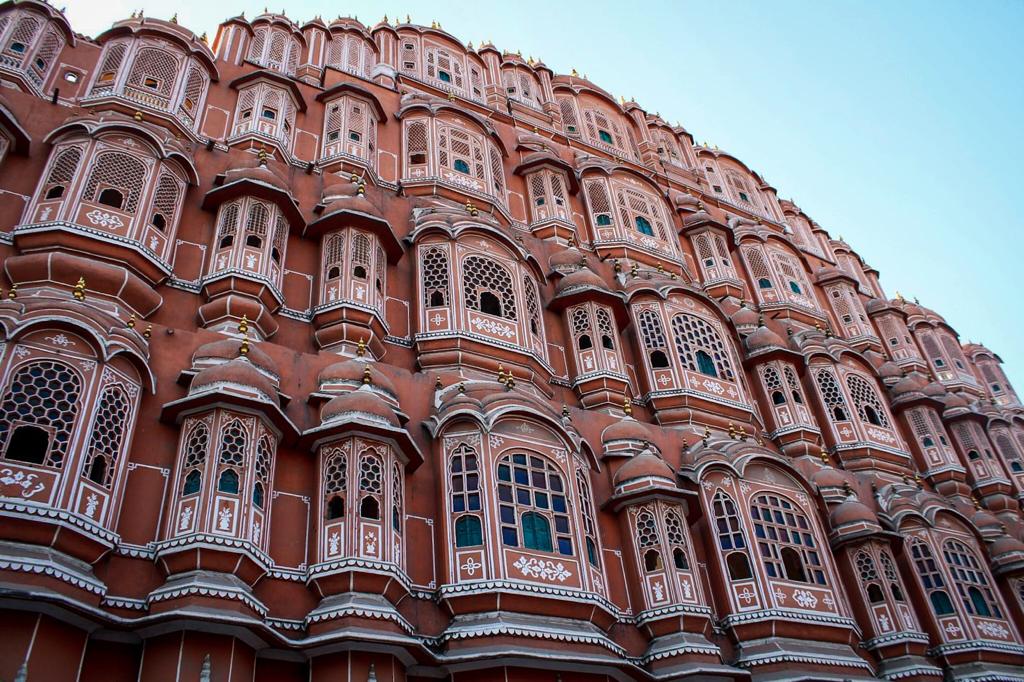
Amer Fort
Actually not in the city of Jaipur, but located just ouside, is one of Rajasthans top sights, the Amer fort (or Amber fort). This magnificent sandstone fort is towering on a hilltop above the town with the same name. In reality it is more a palace complex situated inside the great walls of a mighty fort. There are several rooms and courtyards to explore, and you will also be given great views over the surrounding areas.
!! Please support animal welfare! We recommend to walk up to the fort by foot, instead of going on one of the elephants transporting tourists !!
In the area around the fort you can see long walls going up and over the hills in the surroundings. If you have the time, these walls are great for some hiking. Especially if you hike the walls opposite the main road from the fort, you will be rewarded with spectacular views of the fort.
End your day with a visit in the small town of Amer (or Amber). In this ancient town you will find some few small temples, and the highlight, a beautiful, restored step-well. And best of all? Very few tourists visit here, so you might end up having it almost to yourself.
Amer Fort is located about 11km from Jaipur. With a tuk-tuk its only a 15-20 minutes drive to get there. As always in India you should agree on the price before you get in.

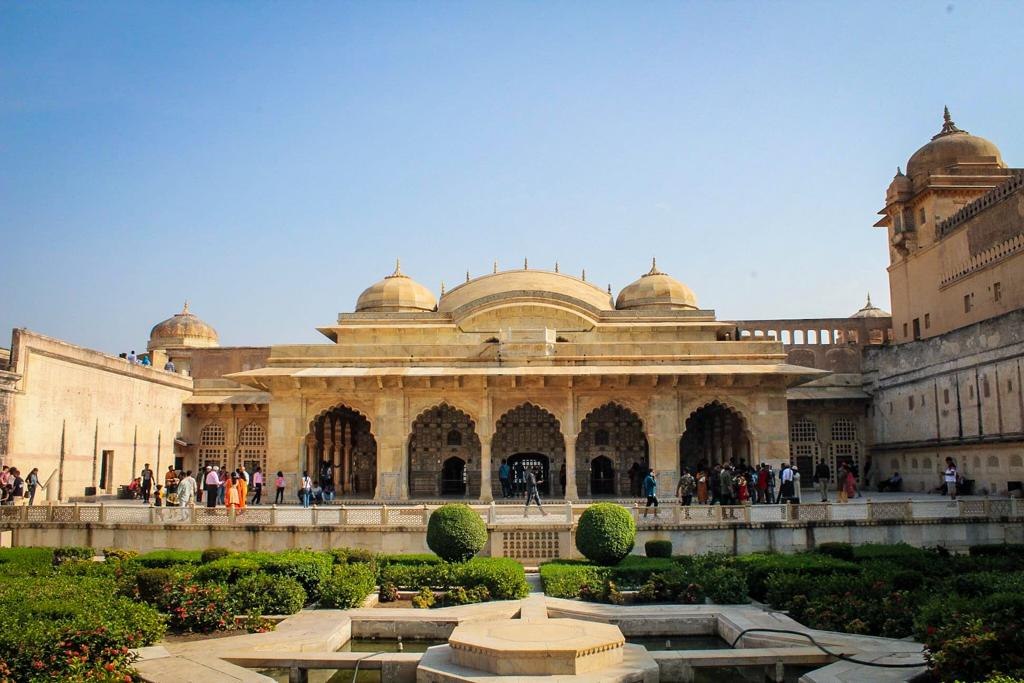
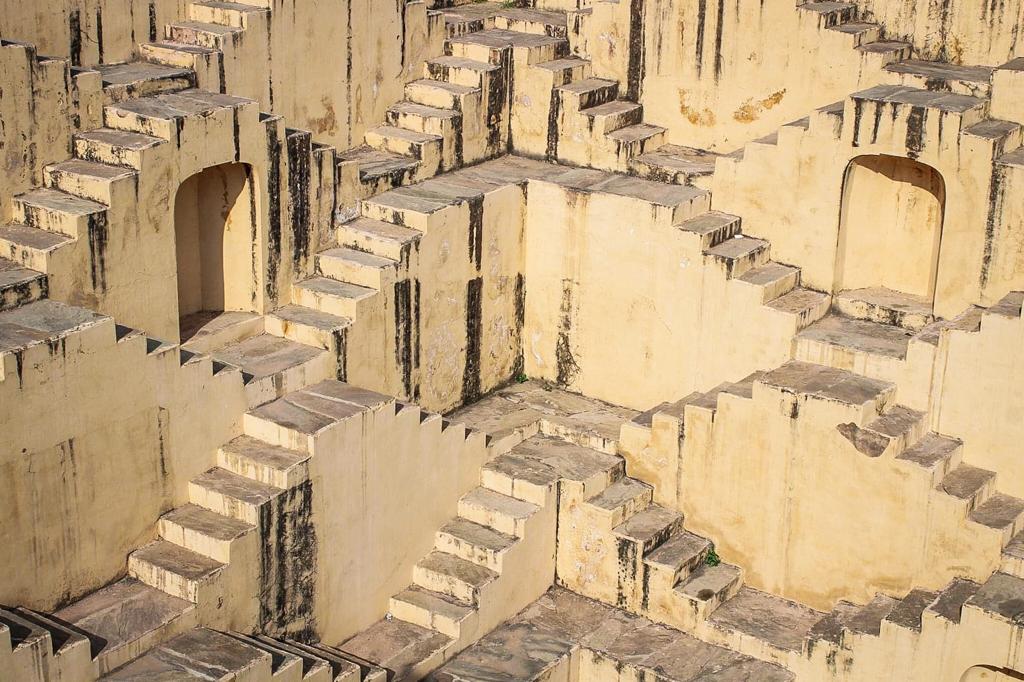
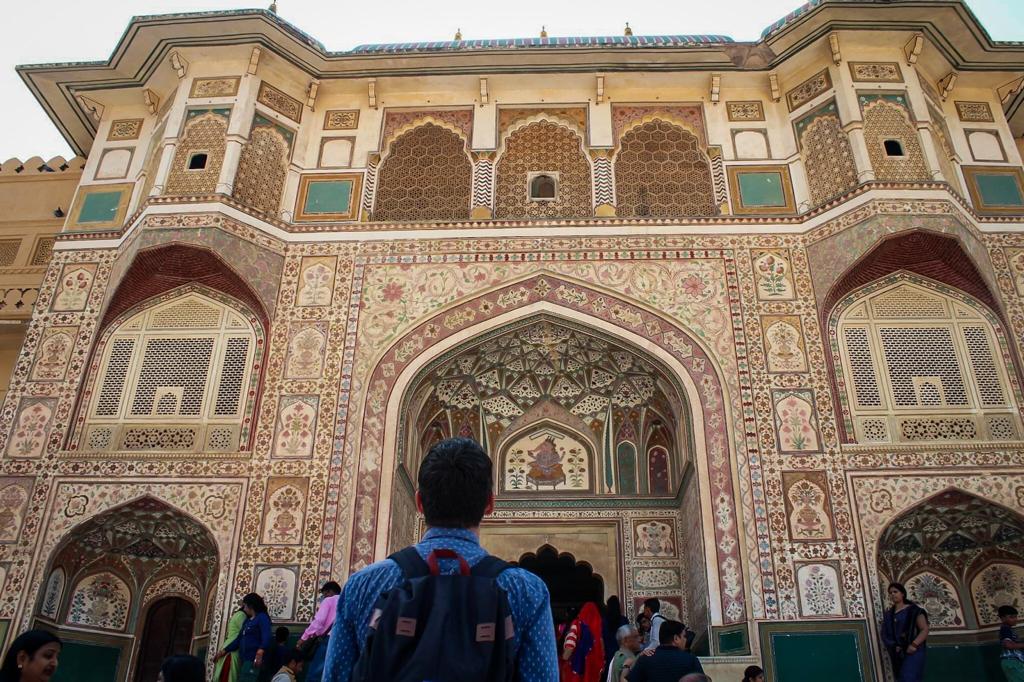
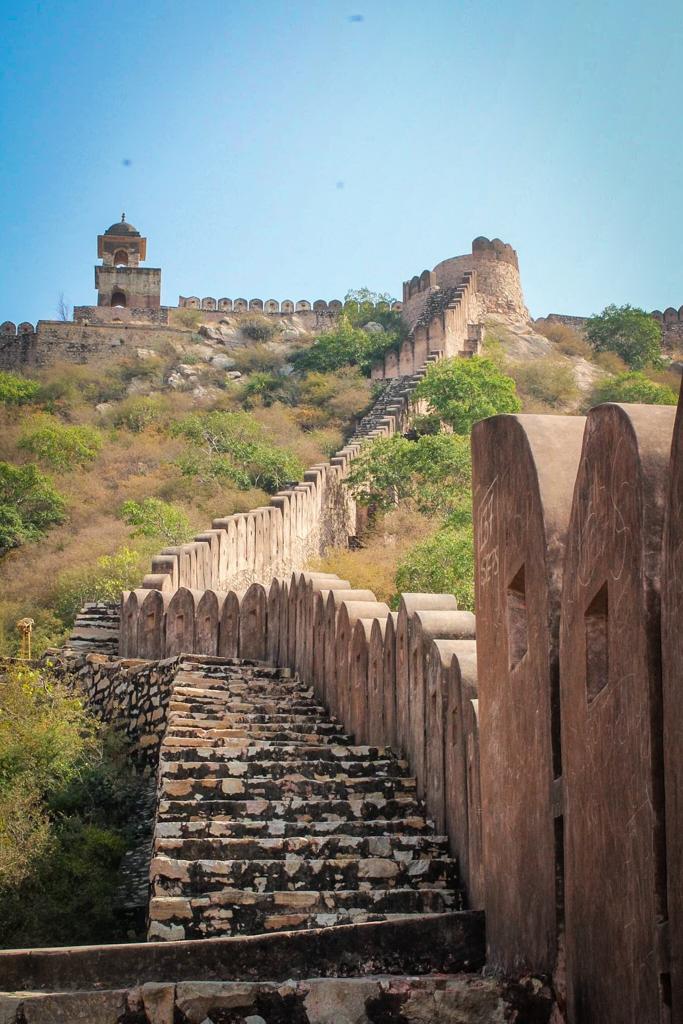

Jal Mahal
In the outskirts of Jaipur, on the way to Amer Fort you will pass the Man Sagar Lake. There, in the middle of the lake is the beautiful Jal Mahal (Water Palace). It’s not a very big palace, but with its great location it looks like something from a dream. The lake is surrounded by forrested hills, making it totally picture perfect.
The palace is not open to the public. Normally you see it on a short stop en route to the grand Amer Fort.

Patrika Gate – the colorful gate in Jaipur
Get you cameras ready! This is probably the most colorful gate you have ever seen. Patrika gate is the entrance to the park at Jawahar Circle. The park is said to be the largest circular highway park in Asia.
This colorful construction is totally worth the roughly 25-minute drive from the city centre. It is a popular stop for photos and instagrammers, so it can get crowded, but during our visit we were lucky to be there almost on our own. Go early in the morning or late in the afternoon to avoid the biggest crowds.
The entrance is for free, and this attraction is actually open 24/7, so you don’t need to plan your visit during limited opening hours.
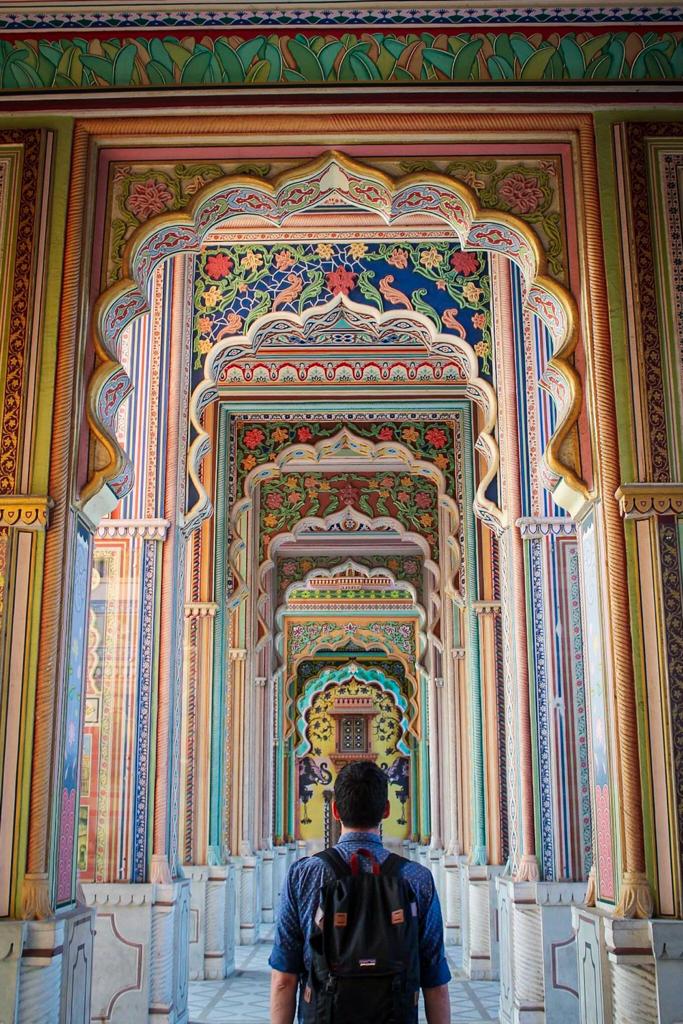
Modern Jaipur
Jaipur is not only about the Old City, palaces and history. It also has a modern part, and especially after traveling a while, it can be nice to spend some hours in a less hectic area, and of course have the chance to have a great coffee as well.
The areas of S-Sceme and Civil Lines are the trendiest parts of the city. Go here if you are looking for great hang-outs. You will find nice restaurants, bars, shopping and good coffee. Check out Curious Life Coffee for nice atmosphere and delicious brew. They roast their own coffee, and you can buy beans to bring back home.
If you are looking for other flavors of food, this is the area to be. Also, some restaurants serve traditional Indian dishes with a modern touch. Some of the restaurants in this are are very popular, and reservation in advance can be smart.
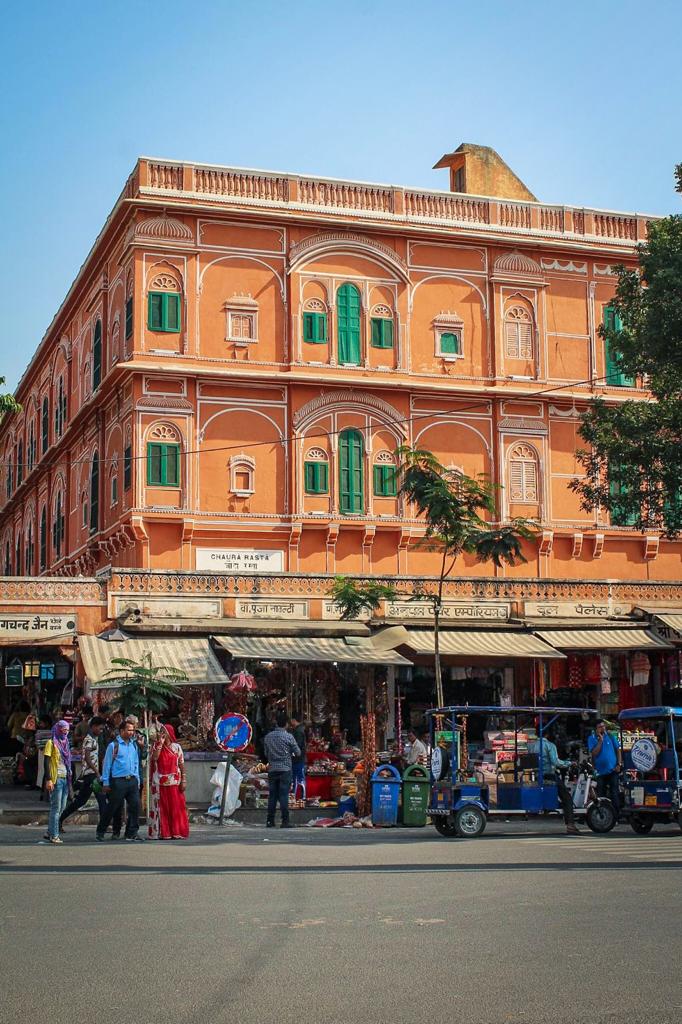
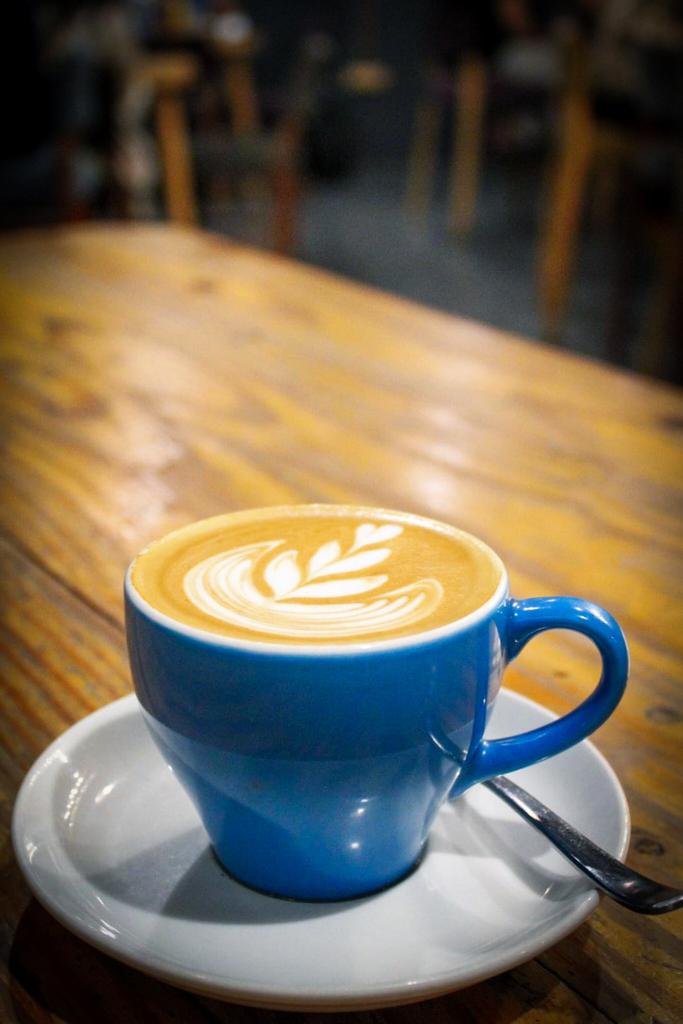
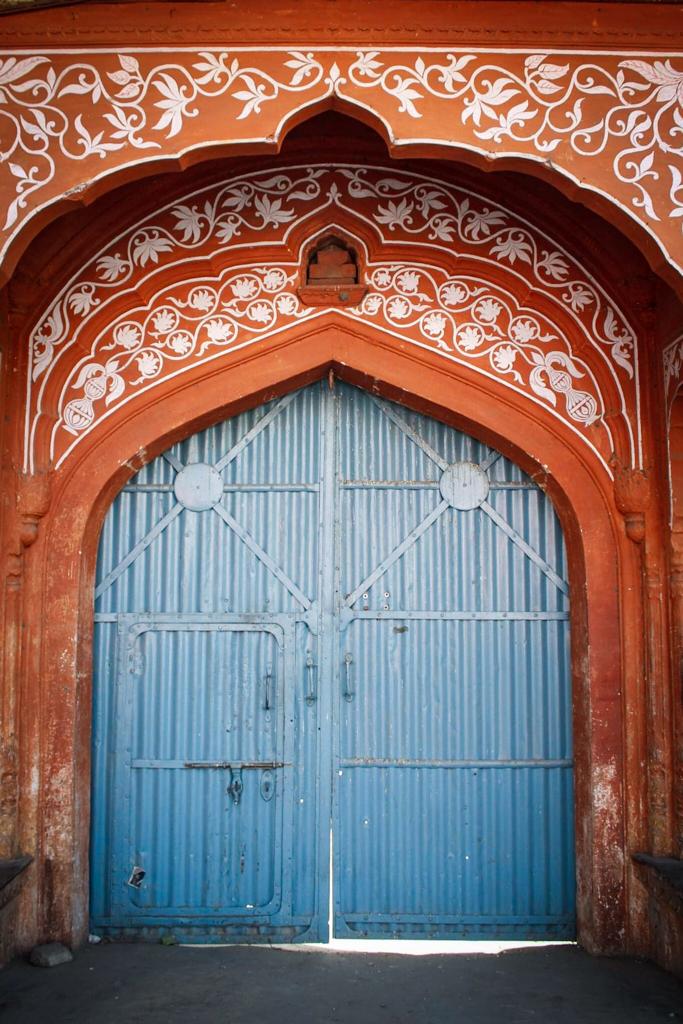
Getting there and around
Jaipur is the major transport hub in Rajasthan, with better connections than any other city in the state. You can arrive Jaipur via bus, train or by air.
Buses leave from the main bus station, and on most routes you can choose between ordinary express buses or so-called deluxe buses, which normally are a bit more expensive and more comfortable than the ordinary buses. from Jaipur there are buses to e.g Agra, Ajmer, Bikaner, Delhi, Jaisalmer, Jodphur, Pushkar and Udaipur.
Train travel in India is an experience, and you should at least do one train journey while in India. Jaipur is very well connected with trains. The major train lines will connect you with places such as Agra, Ajmer, Bikaner, Delhi, Jaisalmer, Jodphur and Udaipur
Buy tickets at the train station, or at the ticket offices if travelling by bus. We recommend to purchase your ticket some days in advance. For a small comission most accomodations can also assist you with buying tickets for you. This way you save some time (and also some hassle).
At arrival and departure you can take a tuk-tuk (autorickshaw) to or from your accomodation. Remember to negotiate and confirm the price before you enter. Don’t pay before you are at you final stop.
Although the streets of Jaipur is chaotic and busy, the city is very walkable, and most attractions inside the city can be reached by foot. For the sights more out of the centre you need transport in form of an tuk-tuk or a taxi.
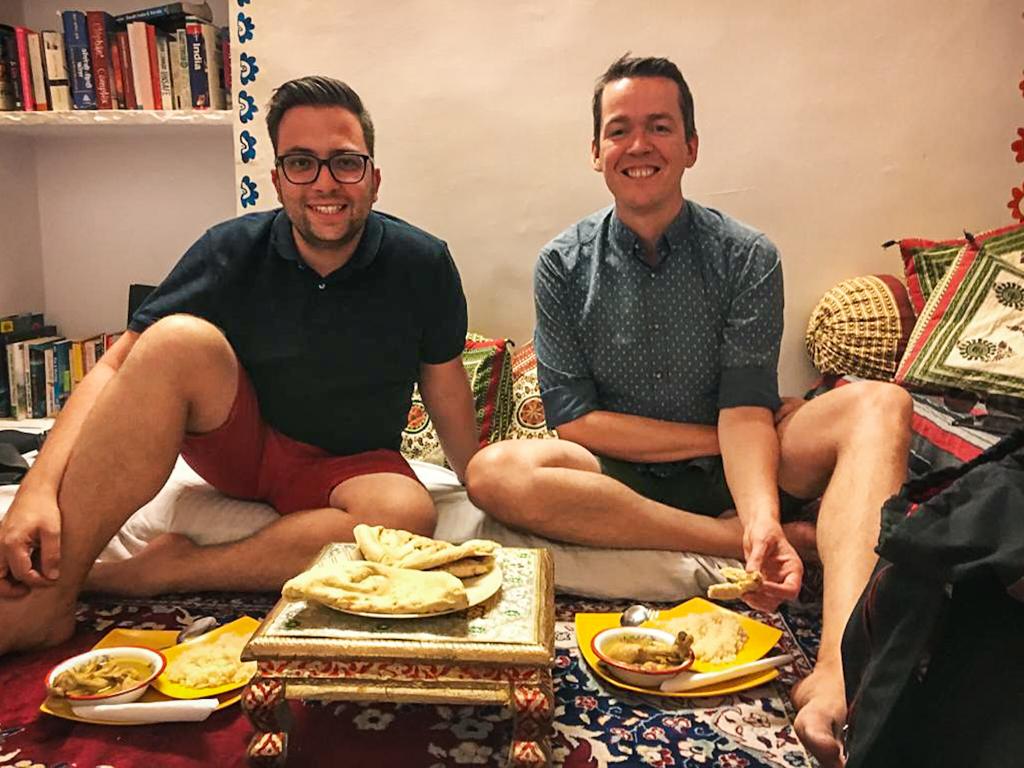
More inspiration:
Read our suggestion of a 4-week itinerary for India if you are on a longer journey. Also, here you can read about Bikaner and Jaisalmer, Udaipur and Jodphur, four other great cities in Rajasthan. Read here about Pushkar if you are considering going there to the camel fair. If you rather want to go south to palm trees and amazing beaches, you can read what to see and to in Kerala.

